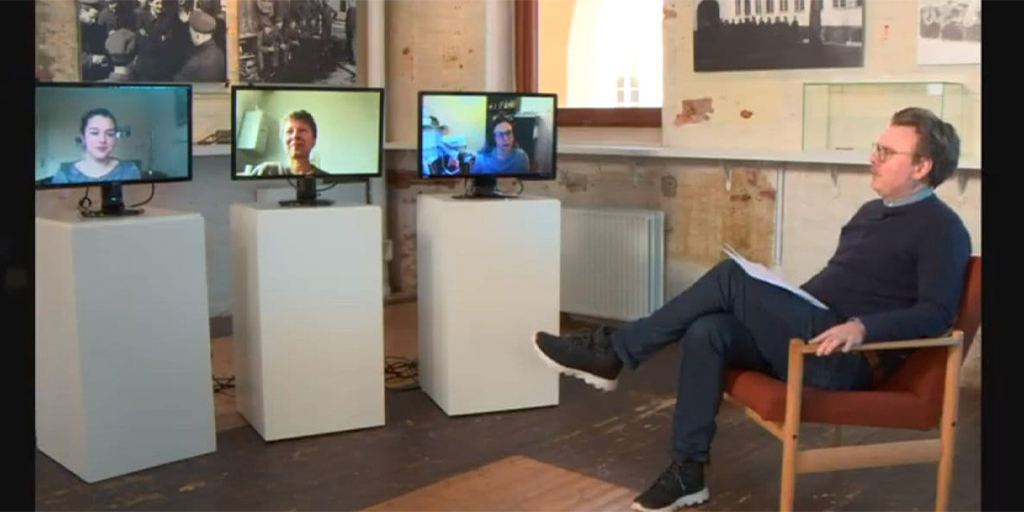
Holocaust Remembrance in a Digital Future: Towards Deep Truth or Deep Fake?
On Thursday 4th February, I was very honoured to join Stephanie Billib, Bergen-Belsen Memorial, and PhD candidate Tabea Widemann to discuss the tensions between ‘deep truth’ and ‘deep fake’ in digital Holocaust remembrance.
The panel was part of a larger programme: The Digitalisation of Memory: Technology – Possibilities – Boundaries hosted in partnership between the Falstad Centre in Norway, and POLIN Museum of the History of Polish Jews, Poland.
In this week’s blog, I reflect on some of the themes that arose in that panel.
The End of an Era?
Whilst there were earlier instances of testimony gathering (including David Boder’s immediate post-war recordings and the extensive Fortunoff collection at Yale in the 1970s), since the 1990s, the impetus to record survivor testimonies in a range of media formats has been heightened by the fear of an approaching post-witness age (Tanja Schult and Diana I. Popescu).
This has been framed as an end of an era, as the Holocaust shifting from living memory to mediated memory (James E. Young) or from what Annette Wieviorka termed ‘the era of the witness’ to the ‘era of the user’ (Susan Hogervorst). Yet such framing makes three assumptions:
- That digital technology, or media more broadly, will save survivor testimony for longevity.
- That digital media are inherently more participatory than earlier forms of Holocaust memory practice.
- That survivor testimony – crucial to Holocaust education when this event is still within living memory – will and should remain central in the future.
I want to offer a response to each of these assumptions.
Digital formats are incredibly unstable, we can see this on a multitude of levels:
- The discontinuation of support for particular file types or browsers, such as QuickTime. This problem is illustrated in the Holocaust context with this virtual tours of concentration camp resource.
- The incompatibility between different types of technology, such as hard drives that use USB-1.
- The particular capitalist model tech industries invest in, which insists consumers get the ‘latest upgrade’ if they want to be able to be able to access new products.
- Digital loss, which can happen in a variety of ways, from compression, lost pixels or file corruption.
- Data transfer errors.
- Online data can get lost in the ether as an increasing amount of data appears on the Internet.
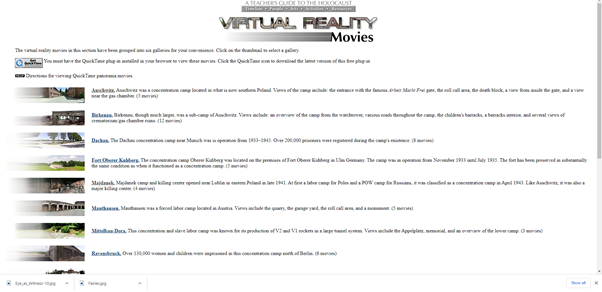
The idea that they are the answer to maintaining survivor testimony into the future is problematic.
Indeed, a mediated encounter with a Holocaust survivor translates their story into a text. Meeting a survivor in-person is an encounter: the material presence before you of this individual who lived through this traumatic past, is what makes it so powerful.
Digital technologies do not necessarily encourage participation
As I will discuss in detail in a forthcoming post, ‘participation’ is an ambiguous and much misused term. It has been rendered somewhat meaningless by the often contradictory and broad ways it has been used.
Writing about the participatory condition or participatory culture hails digital media as creating particularly participatory forms of communication (although not without acknowledging their long non-digital histories). Nevertheless, as Stephen D. Smith and colleagues at the USC Shoah Foundation have highlighted listening to survivor testimony in-person is in itself a deeply participatory experience.
People who have the privilege to listen to a survivor share their story are able to ask the questions they wish to pose, and can often converse with the survivor after the formal presentation. Indeed, the USC Shoah Foundation’s interactive biographies aim to maintain this participatory encounter into the future, after the survivors are no longer with us, rather than introduce a participatory element with digital media.
It is very possible to use platforms that one might take for granted as participatory in traditionally didactic ways, such as announcing events or sharing snippets of testimony or the details of victims who have perished, on social media. Digital memory is only participatory if the encounter is designed to be so; just as with non-digital memory practices.
Survivor testimony does not necessarily have to be the default
Survivor testimony is deeply important to Holocaust memory and education currently. We are very fortunate to have huge archives across the world that have recorded these testimonies in a range of formats, and many survivors have published their narratives in books. There is something incredibly powerful about the material presence of a survivor before you – this person standing here was once there, experiencing these horrible, tragic events.
However, it has been interesting to see a shift in focus towards landscapes in many digital ventures. Although heavily restored and maintained, and sometimes reconstructed, structures at concentration camps, and memorials that mark what is now absent, continue this notion of a material presence which evokes a relationship across temporal planes: the now and the then.
Survivor testimony as presented by a single voice and usually in a beginning, middle and end narrative is a very literary format and has been replicated in many films using videotestimony, such as The Last Days (Dir. James Moll). Such a structure suggests it is a complete story with a closed resolution. Whilst it gives the unfathomable number of victim experiences a human face; it also risks reducing the complexity of the Holocaust into a single, easy to follow narrative. Particularly when hearing a survivor testimony is pupils’ only Holocaust education.
One of the ways digital media are having an increasingly powerful affect on Holocaust memory is through the use of networked logics, drawing together fragments of testimony, material evidence and other sources into mapping projects either of specific sites (for example see the Danish Jews in Theresienstadt project) or bringing a variety of sites together through hyperlinks (EHRI online portal). These experiences open up space for users to follow particular threads, compare different narratives, and to be led by their particular interests. Connectivity of different material elements is key here, but there is rarely any sense of a closed-text or resolution offered.
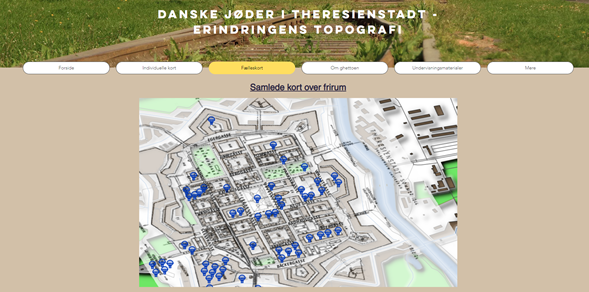
So often, digital media are co-opted for Holocaust memory in ways that just replicate existing paradigms regarding how to remember this past, a ‘virtual seminar’, a ‘virtual tour’, a ‘virtual survivor talk’, a ‘virtual object session’. We might better ask ourselves:
- Is there anything digital media platforms and technologies can do that previous formats could not?
- How can we make use of their specificities to produce memory in ways that are particularly characteristic of digital culture, and thus have the potential of longevity within our increasingly digital world?
The Right to Remember
Another topic that came to the fore in the roundtable was the issue of authority over memory and the tension between institutional memory and popular culture representations.
There are numerous examples of representations of the Holocaust in popular culture that have been deemed inappropriate in public consciousness from the tasteless and sensational film Auschwitz to the award-winning Life is Beautiful. Designers proposing Holocaust computer games have often been targeted with bad press, and last year we saw major debate about the Amazon series Hunters and the TikTok #HolocaustChallenge. Young people have also been shamed for taking selfies at concentration camps, sometimes to the extent of receiving death threats (how that is supposed to be a productive way to encourage them to remember the Holocaust is beyond me!).
For me, one of the most appalling interceptions into this debate was the Yolocaust website by German-Israeli comedian Shahak Shapira. Well-timed to coincide with the marketing campaign for his forthcoming tour, the site shamed young people making them targets for humiliation. For those not familiar with the page, he created composition images which superimposed the smiling teenagers posing at Berlin’s Memorial to the Murdered Jews of Europe over the top of atrocity images from concentration camps. Although, he promised to remove each photograph if their subjects contacted him and apologised for their actions, thanks to the website and the press coverage that followed, these images are easily available via a Google search.
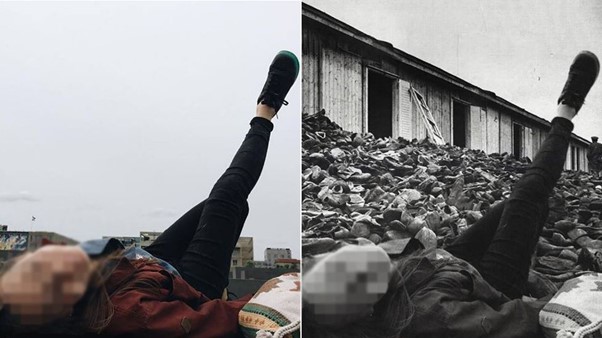
Personally, I believe lambasting people who we might perceive to be ‘getting it wrong’ is entirely the wrong attitude, it is certainly not akin to any pedagogical training I have had. When we shut the door on people and say ‘your expression and memory is not welcome here’, where do they have left to go? Maybe, eventually, they will listen to those who deny and distort the Holocaust (for they are always accepting of new followers!).
We should instead always open the door: imagine if those with Holocaust history expertise and those who were skilled media producers or distributors (amateur or professional, of film, games or social media content) worked together and listened to each other more. The latter have far better expertise in how to reach wide audiences that the former probably does not always engage; the former has the expertise in Holocaust history and memory that the latter lacks.
Let us take as one example, a counter-approach to Shapira: Instead of publicly shaming these young people, we instead meet with them and say ‘so, this is why we tend to think selfies are offensive, why do you think they are appropriate? Educate us and we will share our knowledge with you too. How can we come to a compromise? How can we work together to think about using the selfie for good rather than creating a culture where the selfie – regardless of any difference between one image and another – is verboten?’
I am very fortunate at the moment to be leading an advisory board for a computer game designed to target mainstream gamers, which is now being co-written by a Holocaust survivor, with others from within Holocaust studies, heritage and education advising. Embracing networked forms of memory production in these ways recognises the ever-emerging and dynamic nature of memory. It is never fixed; it is never appropriate to dictate to others how they should remember. It is only through co-production that one can acknowledge memory’s multifaceted character.
Deep Truth/ Deep Fake
The final thread I will reflect upon here is the apparent binary opposites of ‘deep truth’ and ‘deep fake’ supposed by the title of the roundtable discussion. There is increasing fear related to Artificial Intelligence and Deep Fakes, yet the public debates about these two digital phenomena is nothing new.
In the UK, the Cottingley fairy hoax of 1917 highlighted people’s fears of the way photograph could be used to present a fake reality. The mimetic quality of photography made this particularly concerning. If it ‘looks like’ it is depicting reality, how can we know when we are being tricked?

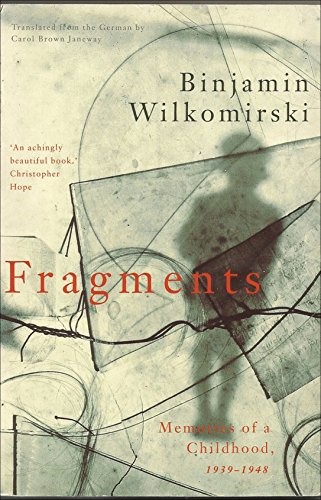
Binjamin Wilkomirski proved that Holocaust testimony could be faked in literary form.
The problem with these fears about new technologies is that they are rooted in the idea that these particular forms mediate content and other media do not.
All media are re-presentational; all media construct meaning about the world through particular lens. They do not simply present the world as it is given.
Reality as perceived through media has always been unreal.
Jean Baudrillard talked about the Simulacra back in 1981, concerned about the image-saturated world we live in and that representations had now lost any anchorage to actual reality.
Every form of communication in our lives involves a process of mediation, none of them are neutral: from the language we use to our gestures, artworks, literature, theatre, cave paintings and indeed our museums. It was Roger Silverstone who once referred to museums as media.
Museums are always constructed narratives, often relying on conventions of Imperialistic ideas of taxonomy and display, and Western concepts of narrative structure. They present victims’ belongings, including their shoes and hair, without consent. They museify living people into objects, changing the social status of ‘bodies’ as they do.
I think we are so utterly terrified by deep fakes because they make us open our eyes to the construction and unreliability of every image, every utterance, and every form of communication we encounter. It is deeply concerning that the majority of society does not constantly realise this already (media education is key here and not just ‘digital literacy with its neoliberal overtones!). Deep fakes draw attention to the very unreal reality we have always been living in as we live with and through mediation, that we rarely question.
No representation is objective truth or simply authenticity – this is one of the basic premises of Media Studies 101; deep fakes just make this very apparent to us. We need to be more critically astute to the power relations involved in all forms of image-production, including museum curation, we need to be transparent about these processes. This could be no more urgent that the current moment, in the UK context, as our Government threatens to majorly defund Arts and Humanities education, especially mentioning Media Studies in their attacks.
To end on a positive note, I finish with one example of an organisation using digital media to encourage such critical media engagement. This is the National Holocaust Centre, UK’s Eye as Witness exhibition. It has sadly been paused due to Covid, of course, so I have not yet had the chance to visit. Whilst Virtual Reality is usually taken for granted as creating immersive spaces, from what I know so far, Eye as Witness encourages critical engagement with historical sources. It allows visitors who put on the VR headset to enter an image and turn around and look beyond its original frame to the photographer (in this case a perpetrator) and the wider scene, to think about what is included and excluded from the image.
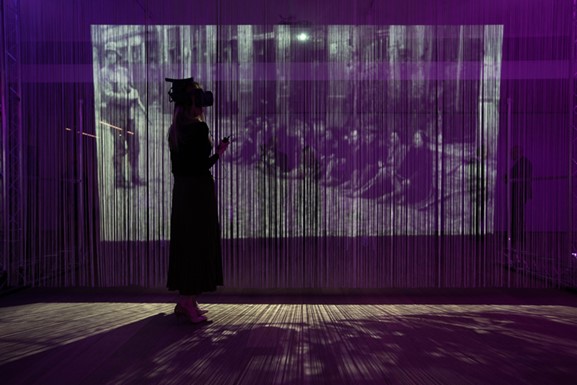
Visitors at the launch of the National Holocaust Centre’s Eye as Witness exhibition at the South Hamstead Synagogue Centre. Credit: David Parry
It reminds me of a moment in A Film Unfinished, when Israeli filmmaker Yael Hersonski performs a digital zoom on a piece of perpetrator-filmed footage of the Warsaw Ghetto and lingers on the grainy background where Nazi officials and victims of the ghetto are preparing gallows.
Both of these examples show how digital media can be used to encourage critical reflection about the construction of Holocaust images. We should look to apply the same logics to a transparency of curation too, rather than encourage audiences to take for granted the narratives we choose to tell. Such an approach builds trust with audiences and allows them to see how representational choices are made.
We should not simply dismiss or fear any technology, but rather understand all media production as deeply embedded within human culture. It is not what it is that matters, but how we use it.
More details about the full programme created by the Falstad and POLIN organising teams can be found here. I am very thankful to all involved for inviting me to play a small part in this impressive event.
You can also watch the two day’s of public events below. I for one am really looking forward to catching up on the rest of the programme!